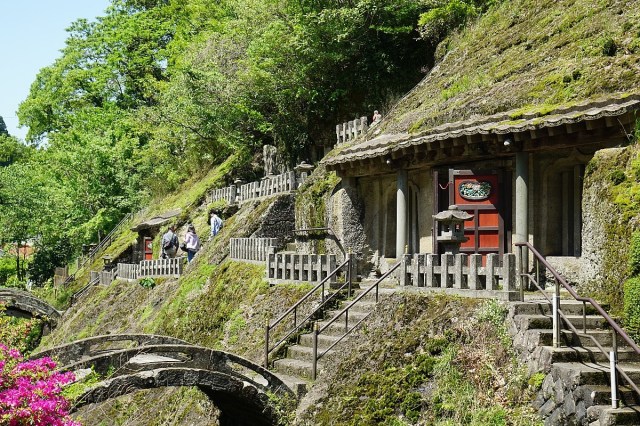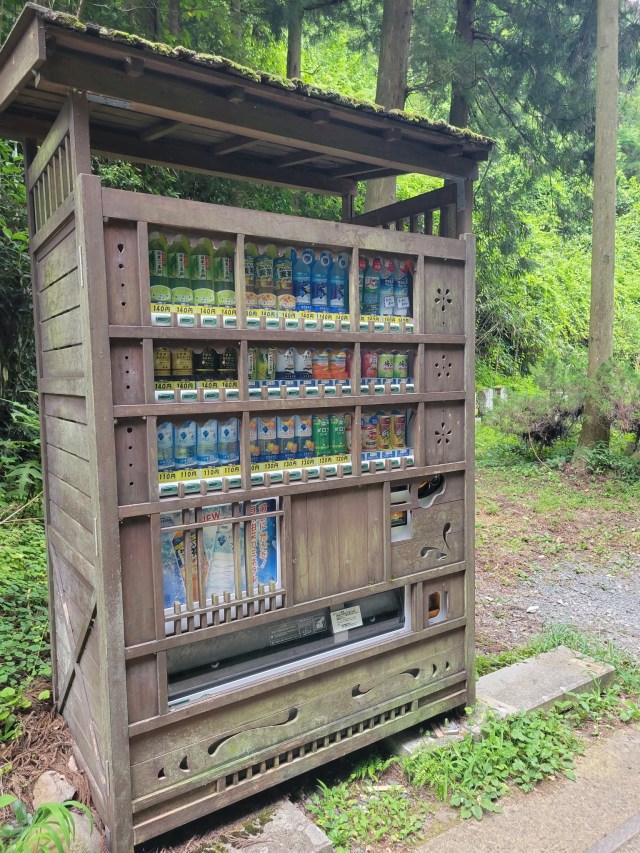
Silver town’s vending machine deserves a gold medal for design.
It seems like no matter where you go in Japan, you’re never very far from a vending machine. Ordinarily, that’s great, since having quick and easy access to a bottle of cold water of hot tea is definitely nice during the country’s sweltering summers and chilly winters.
However, while vending machines are a common enough sight that they sort of melt into the landscape of Japan’s urban and suburban neighborhoods, it’s a different story out in the country’s mountains and forests, where they can stick out like a sore thumb. Apparently that was a concern at Iwami Ginzan, a preserved silver mine in Shimane Prefecture (pictured above) that’s been designated as a UNESCO World Heritage Site. Yes, it’s understandable that visitors are going to get thirsty, but it’d be a shame for a vending machine to mar the view of the historical buildings and surrounding natural beauty, so Iwami Ginzan has a vending machine that blends in instead.

“A vending machine that’s very considerate of the scenery,” says @ekimemo_kinako, the Japanese Twitter user who snapped the photo. While it offers the familiar lineup of green tea, water, coffee, and sports drinks that you’ll find it just about any Japanese vending machine, there’s hardly any modern sheet metal to be seen, and instead the visible exterior is a beautifully understated wood carving, with subtle flourishes keeping with traditional Japanese architectural aesthetics.
景観に配慮した自動販売機 pic.twitter.com/hOPn6tARRv
— きなこもち@駅奪取、駅メモ (@ekimemo_kinako) August 8, 2021
Commenters were equally charmed by the considerate and gorgeous design, which looks like it predates automated commerce, reacting with:
“It looks like it’s been selling drinks since the Edo period.”
“Is there a person working inside of it?”
“I almost expect a panel to pop open and someone to stick their hand out when you pay.”
“I bet Totoro hangs out nearby.”
While the vending machine wasn’t actually installed in the samurai era, or the vague several decades ago of My Neighbor Totoro, it’s not brand-new either. It was originally installed in 1996, and while the wooden exterior is a frame that was built around the machine (look closely, and you’ll see hinges on its left side so that the front section can be swung open when the machine needs to be restocked), the craftsmanship wasn’t cheap, costing about 300,000 yen (US$2,750). Still, the investment was deemed worth it to preserve the scenery, and after 25 years in service, it’s started to take on a rustically weathered look, complete with some moss on the roof showing its now get a history of its own.
Source: Twitter/@ekimemo_kinako, IT Media
Top image: Wikipedia/663highland
Insert image: Twitter/@ekimemo_kinako
● Want to hear about SoraNews24’s latest articles as soon as they’re published? Follow us on Facebook and Twitter!

No hay comentarios:
Publicar un comentario